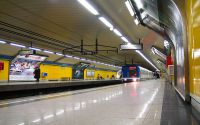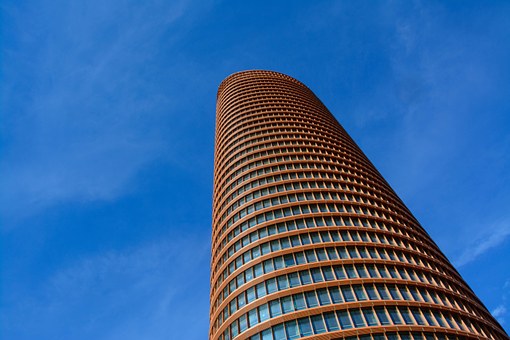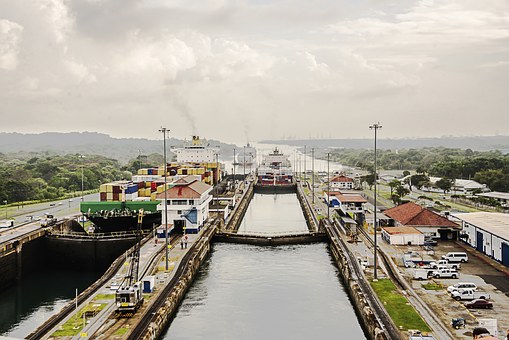Almost every major metropolis around the globe has a mass transit system. When executed properly, these can be the most economically and physically efficient means of moving large populations through a city. Unfortunately, only a few of these systems in the United States have been designed or operated well enough to merit recognition; namely, Boston and New York. Outside the United States, mainly in Europe, this is not the case. London is famed for its underground, as is Paris. One less known example that has proven extremely popular, safe, and effective has been the Madrid Metro. Engineers have paid significant attention to seven characteristics that make a successful Metro system. By engineering responses to factors ranging from reliability to safety, the designers of the Madrid Metro have set an example for those looking to improve their own mass transit capabilities.
Introduction
“Proxima estacion: Canal. Correspondencia con: Linea Dos…
Within a week of arriving in Madrid, I could perfectly recite the announcement that airs on Metro Line Seven’s loudspeakers just before pulling into the Canal Station (see Fig. 1). Rather ironic, considering that while preparing for the Viterbi School of Engineering’s Summer Overseas Program, I expected to cloud my memory with other things from Europe: great nightlife, amazing beaches, Smart Cars, and enjoying the World Cup in pubs and city squares.
Although those sights more than exceeded my expectations, I never realized I would be so captivated by what I see as Madrid’s most overlooked asset: the Metro, the city’s underground subway system. However, subway systems are nothing new. In fact, almost every major US metropolis including Los Angeles has some sort of a metro. Unfortunately, they lack the popularity and public embrace of their European counterparts.
Why? The answer becomes clear when one begins to ride the subway everyday, slowly noticing the myriad types of passengers who use the metro, along with the emotion that accompanies each ride. The environment separates the Madrid Metro from most American subways. From the moment one descends the unassuming street level steps to enter the station, until again reaching the surface, travelers feel comfortable, oriented, and most importantly, safe. How the Metro achieves this is far from dumb luck; engineers and designers have anticipated, coordinated, and accounted for human behavior with careful calculation.
A Little About the Metro
Inaugurated by King Alfonso XIII of Spain in October of 1919, the Madrid Metro began service on Line 1 between Sol and Cuatro Caminos. By about 1970, almost all of the first 5 lines had been completed [1]. Currently, the metro extends 226 km and has 236 stations. However, by 2007, the system will be expanded to 283 km with 281 stations, making it the second largest European metro network after the London Underground [2]. With 10 lines, the Madrid Metro covers almost the entire city area and at its deepest lies 48 meters underground.
How to Gauge Success
Physically, the Metro shares much with its counterparts. Like any other metropolitan rail system, it has several lines, stations, and interchanges. Apart from its peculiar 1445 mm rail gauge (distance between each rail on a single track), it is relatively indistinguishable from other subways [3]. Tunnel excavation occurred using many of the standard tunneling techniques, including Cut and Cover, and EPB, and the majority of its rail cars are not up to date. In fact, the Madrid Metro doesn’t even make the top world subway list on the Travel Channel [4]. But somehow, the Metro ferries over 565 million passengers per year [5], in a city whose population is just over 5 million [2].
So how does one go about explaining such success? Daniel Boyle, Peter Foote, and Karla Karash, experts at the Transportation Research Board, prepared a report in 2000 detailing how to market public transportation in the new millennium [6]. In the report, the transportation scholars described seven “key value” characteristics that they felt were essential regardless of demographic. These include (1) convenience, (2) comfort, (3) a sense of making the “smart” choice, (4) affordability, (5) extensive mobility for transit-dependent riders, (6) a combination of economics and the negative aspects of automobile travel for those who opt for transit, and (7) reliability and dependability for all groups. The Metro not only fulfills these seven requirements, but exceeds them, providing residents and visitors to Madrid a truly useful transportation option.
Convenience
“Anywhere in the city, I never feel as though I’m more than 10 minutes from a Metro stop” says José Martinez, a University of Southern California engineering student who studied abroad in Madrid. What appears as hyperbole holds quite a bit of truth. Examining a Metro diagram layered over a map of Madrid reveals that almost anywhere in the city (apart from large public parks such as the Casa de Campo and Parque de Buen Retiro), a traveler never lies more than 1,000 meters from a metro station, which at a relaxed pace measures just about 10 minutes (see Fig. 2).
Location, however, composes only one half of convenience; hours of operation constitute the other. Open from 6:00 am to 1:30 am every day of the week, the schedule accommodates not only the Spanish workday, but also the nightlife. With dinner generally beginning around 9:00 pm and often extending well past 11:00 pm, Madrileños who choose to take advantage of the nightlife generally do not make it to their destinations until midnight; thankfully, the Metro conveniently allows for this every night of the week.
Comfort
While many find it difficult to describe Madrid during the summer, the two words that come most easily to the top of the list are “hot” and “dry”, making the subway especially popular from about May to August. Even without air conditioning in the stations (the majority of subway cars are adequately equipped), several design features ensure that travelers do not require a shower after waiting for a train.
First, the stations are located underground. This fact may not sound revolutionary, but many Metro systems, including those in Los Angeles and Dallas, use above ground rails and stations. Considering that such systems were built well after the Metro and generally have higher summer temperatures than Madrid, the Metro designers took a facet of their environment into account that is often forgotten.
Second, most stations have high concrete ceilings, vents placed above the tracks, and fluorescent lighting. By using concrete slabs to reinforce the ceilings of the stations, the engineers added a layer of insulation that eliminates major temperature changes. Moreover, by placing vents in the arched ceilings above the tracks, hot air accumulates there and is pumped out at regular intervals. This pumping actually draws fresh air into the Metro in order to compensate the lost volume of hot air. Finally, the use of fluorescent lights, which emits significantly less heat compared with incandescent lights, keeps the stations brightly lit and wonderfully cool [7].
The “Smart” Choice, Affordability, Economics and Negative Affects of Automobiles
With gas over 1€ per liter (approx. $4.50 per gallon), parking spaces about half the size of a Chevy Suburban, and roads barely wide enough for a horse let alone a vehicle, it would be difficult for Europeans to fit anything larger than a small sedan in the average street. Because of this, petite cars and motorcycles cram European streets. Additionally, Europeans share a significantly greater concern for the environment and use of natural resources [8], evident from their use of drastically more fuel efficient models than seen in the United States.
Curiously, even this economic and environmental strain of owning and driving a car does not seem to slow their use. The most casual observer can see the congestion approaching El Paseo de la Castellana (Madrid’s main North-South thoroughfare), which often exceeds that seen on Los Angeles’ main freeways.
On a more practical note, taking the Metro costs less. A monthly Metro pass (which incidentally also works with the city bus system) runs approximately 36€. On the other hand, just the monthly cost of insurance runs about three times this figure [9]. Add this savings to the more mitigating concerns and one can sensibly conclude that the Metro is the most efficient, cost-effective, and environmentally friendly way to travel Madrid.
Extensive Mobility
“The availability of transit was particularly crucial to the 21 percent who reported that without transit they would not have made the trip at all. This result demonstrates the importance of transit in providing certain segments of society with basic mobility” [10]. This study done by the US Federal Transit Administration, based on information collected from 1996 to 1998, over 19 different public transit authorities reveals a requirement of a metro system not immediately evident to most designers: that it must be complete. But what does complete denote? A diagram of the Metro system clearly illustrates this: Metro lines access all four train stations in the city, Barajas Airport to the northwest, as well as every major business and shopping district. The Metro provides more than just a north-south and east-west backbone. Apart from the New York and Boston subways, no American metro system comes close.
Reliability and Dependability
For most users, especially those who utilize the Metro to go to work, reliability and dependability are the keystones of any good metro system. In fact, apart from convenience and extensive mobility, this regularity draws the majority of the systems’ users. As with any mechanical object, however, the Metro does malfunction, and lines do go down; in fact, during the summer of 2006, one complete line and portions of two others were shut down for renovation.
Unusually, service on these lines has not been suspended. Instead, Madrid buses have been organized to fill in the gaps not serviced by trains, meaning that the Metro system has gone out of its way to make sure that despite its inability to provide normal service, the Metro has done its best to maintain the regularity and completeness of their offered service.
Above and Beyond
In addition to fulfilling these seven characteristics set out by Boyle in 2000, the Madrid Metro exceeds expectations by standing out in one regard: safety. Aside from the inherent pick-pocketing risk found throughout Madrid, the Metro, generally even at night, remains safe thanks to two specific safety measures. First, Metro Stations have restricted access; that is, without being a ticked passenger, one cannot pass through the turnstiles and descend onto the station platforms where the passengers wait. Second, rather than rely on the municipal police for security in the station, the Metro hires private security. They not only man each station, but also intermittently ride the subway, creating a visible crime deterrent throughout the entire system. Moreover, this creates a force intimately familiar with trouble spots in the system, without taking a toll on the city’s police force.
So What?
With this in mind, it becomes clear why everyone from suit-clad businessmen to loquacious youngsters rides the Metro: its amazing marketability to all demographics. Rather than create a mass transit system for the less affluent, the designers of the Metro have created a safe, efficient, and attractive web of stations and routes that can be used by all who inhabit and visit Madrid. Such design and forethought can be a tremendous asset to engineers of public transportation in the United States. Americans have been slow to grasp technologies that take away from the car culture; Americans do not fail to see the environmental and cost benefits of such public transportation systems, but they do feel that organized mass transit takes away from their independence. By using the techniques proven in Madrid to stimulate interest in public transportation, American engineers have an amazing opportunity to create mass transit systems that appeal to everyone, whether rich or poor, by making a marketable system that in effect creates a new form of independence through efficiency, affordability, safety, and most of all usability; elements that are currently lacking in many of America’s vast public transportation initiatives.
.jpg)




